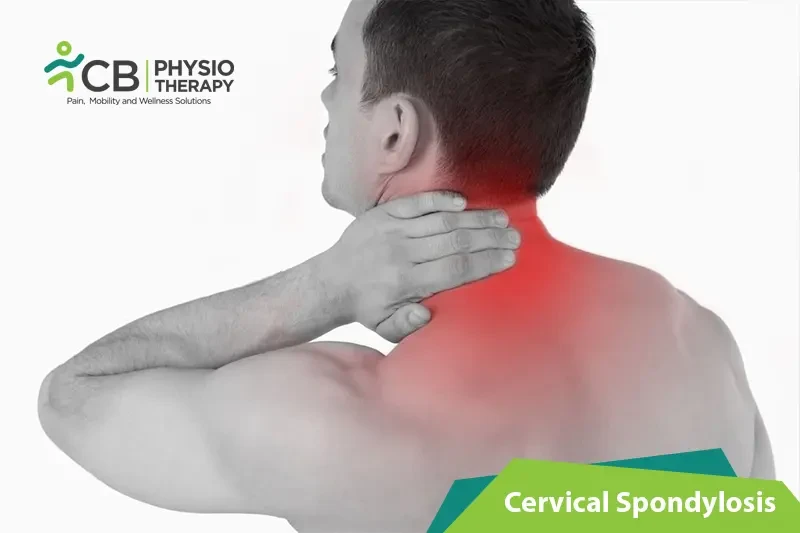
Cervical spondylosis is a condition that causes degeneration of vertebrae, discs, and ligaments in the cervical spine. The neck or cervical spine is formed of seven small vertebrae that start at the base of the skull. In cervical spondylosis, the edges of vertebrae may develop overgrowths of bone known as spurs, these spurs occur as a result of the tendency of the body trying to grow extra bone called osteophytes. Over some time, the disc gets thinner and loses the ability to absorb shock.
People with cervical spondylosis, mostly don't have significant symptoms, if present they include:
Pathology:
Cervical spondylosis occurs due to disc degeneration. Due to old age or wear and tear, the disc loses water and collapses. Initially, this process starts in the nucleus pulposus. This results in the central annular lamellae moving inward while the external concentric bands of the annulus fibrosis bulge out. This causes increased stress on the cartilaginous endplates. Bone formation occurs resulting in osteophytes.
Cervical spondylosis occurs because of numerous reasons, a few of them are mentioned below:
Physical examination:
Physical examination includes checking reflexes, muscle weakness, or sensory deficit, and testing the range of motion of the neck.
X- rays:
X- Rays can be used to check for bone spurs, osteophytes, and other abnormalities.
CT scan:
CT scan helps to provide more detailed images of the neck.
Magnetic resonance imaging (MRI):
Magnetic resonance imaging (MRI) scan helps to locate pinched nerves.
Myelogram:
Myelogram dye is used which gives a more detailed image.
Nerve function tests:
A nerve conduction test is used to check the function of cervical nerves.
Electromyography:
Electromyography is used to check the function of the cervical muscles.
Medications: Muscle relaxants, Narcotics, Antiepileptic drugs, Steroid injections, Non-steroid anti-inflammatory drugs (NSAIDs).
Note: Medication should not be taken without the doctor's permission.
Surgery:
Surgery is considered in patients with severe or progressive cervical myelopathy, or in patients in whom conservative measures fail.
Surgical treatment for degenerative cervical disorders involves decompression of the neural elements. Decompression may be achieved using an anterior, posterior and combined approach. Surgery interventions include foraminotomy, anterior cervical discectomy without fusion, anterior cervical discectomy with fusion, cervical arthroplasty.
For compression at more than two levels, posterior compression developmental narrowing of the canal and posterior decompression ossification of the posterior longitudinal ligament are recommended. Posterior laminoforaminotomy/ foraminotomy and/or discectomy is also done. Development of the adjacent level disease may lead to total disc arthroplasty.
Heat therapy provides symptomatic relief by increasing circulation and decreasing pain.
A cold pack is used to provide relief for sore muscles.
The passage of sound waves causes tissues to oscillate at a frequency that increases blood flow. It is used to decrease inflammation that is caused due to the herniated disc.
Transcutaneous electrical stimulations (TENS):
Transcutaneous electrical stimulations help decrease pain and swelling.
This therapy helps to increase blood circulation, stimulates the spinal nerve, reduces pain and inflammation.
Collar or neck brace:
A soft neck brace or collar is temporarily used for relief. Though, wearing a neck brace or collar for a long time can make the muscles weaker.
Massage therapy uses appropriate pressure, to reduce cervical pain. Massage is also effective in increasing blood flow, reducing swelling, promoting tissue growth, and providing relief from muscle spasms.
Manual therapy can be used for reducing pain, thus improving function by increasing the range of motion.
Thrust manipulation:
Thrust manipulation technique is given in a prone supine or sitting position, then cervical traction is applied to enlarge the neural foramen and reduce neck stress.
Non-thrust manipulation:
Non-thrust manipulation techniques include posterior-anterior (PA) glide, given in prone positions. The cervical spine techniques include retraction, rotation, glides in ULTT1 (Upper Limb Tension Test 1) position and PA glides.
Soft tissue mobilization is performed on the muscles to decrease pain and increase mobility.
Range of motion can be increased by doing simple exercises, like neck flexion, extension, side flexion, and rotation movements.
Neck stretching exercises:
Neck stretching exercises are done to decrease neck stiffness and pain. And also increase the flexibility of the neck.
Strengthening exercises are recommended to regain the lost strength of the neck muscles. These exercises include isometric exercises, isotonic exercises, and many more.
The patient is advised to maintain the alignment of the spine during sitting and standing activities. And not to remain in the same position for a longer period and therefore take breaks in between.
Select your City to find & connect with our experts regarding Physiotherapy for Cervical Spondylosis